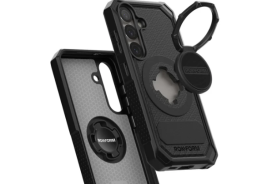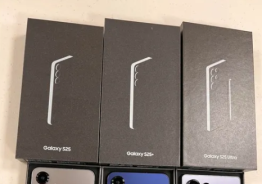Smartphones play a big role in our everyday lives here on Earth, but as it turns out they can also be quite useful in orbit. Though much of the recent media attention on NASA has focused on the Curiosity rover on Mars, the agency has other exciting experiments in the works as well. A team at NASA's Ames Research center in Moffet Field, California, is currently working on miniature satellites built with Android-powered Nexus One handsets.
Dubbed "PhoneSat," NASA's project is part of a larger experiment called the Small Spacecraft Technology Program, which incorporates small consumer electronics into working nano-satellites. There is no exact launch date set for the PhoneSat project, but three PoneSat units will be rocket-bound sometime late this year.
Based on information provided by NASA's Space Technology program, we know that the team has already built two nano-satellite prototype models, originally set to be launched at different times. The first model is dubbed PhoneSat 1.0 and has minimal functionality, aiming to prove whether a mini-satellite with a smartphone can survive a short while in space. If the satellite can send back operational health and picture data while in space it would mark a great milestone and pave the way to even more greatness.
The main pieces of the satellite will also include external batteries and an external radio beacon in addition to a Nexus One. Meanwhile, a watchdog circuit will monitor the system and, if necessary, reboot the Nexus. All of this will be backed into a small shell about the size of a coffee cup, and there will be three such units manufactured. Each unit weighs less than 4 pounds.
The more advanced model, the PhoneSat 2.0, will build on the capabilities of the first model and improve them by using a newer Samsung Nexus S. The satellite's design will also feature a two-way S-band radio, solar arrays, and a GPS receiver. The solar panels will allow the satellite to embark on a longer mission, while the radio will command the unit from the ground. The PhoneSat 2.0 design also incorporates magnetorquer coils, i.e. electromagnets that interact with the Earth's magnetic field, as well as reaction wheels to control the unit's orientation in space.
Two PhoneSat 1.0 and one PhoneSat 2.0 models are scheduled to launch aboard the maiden flight of Orbital Sciences Corporation's Antares rocket later this year, said a NASA public relations representative.
The PhoneSat team has been running tests to push the Nexus One's limits for a few years now, preparing for this mission. In July 2010, two Nexus Ones were launched on rockets as a preliminary tests to see how the handsets would handle high speeds and high altitude. One rocket crashed and destroyed the smarphone, while the other landed with the Nexus One intact. PhoneSat 1.0 has also been subjected to tests in a thermal-vacuum chamber, on vibration and shock tables, and on high-altitude balloons. All of those tests were successful.
According to a PhoneSat flight demonstration document, the goal is to "launch the lowest-cost and easiest to build satellites ever flown in space." Each PhoneSat prototype costs roughly $3,500 to build, and the NASA engineers use commercial off-the-shelf hardware in their designs. The engineers have not modified the hardware nor created any new technologies for this mission, they are working only with widely available products.
These low-cost units can significantly decrease costs for future NASA small-spacecraft projects, and the agency has several applications in mind. The team plans to use the PhoneSat units in future missions involving moon exploration, testing of new technologies and components for space flight, as well as low-cost Earth observations. Moreover, a mission scheduled for 2013 aims to use the PhoneSat 2.0 to conduct heliophysics measurements.
© Copyright 2025 Mobile & Apps, All rights reserved. Do not reproduce without permission.

















